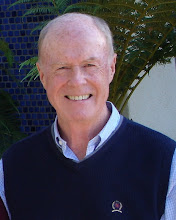1993-2010
Southern California/Orange County CIO Breakfast Round Table
May 13, 2010 meeting
Present: Carmella Cassetta, Sean Brown, Jim Sutter, Andy King, Tina Haines, Jennifer Curlee, Vinu Gurukar, Jeff Hecht, David Mann, Hicham Semaan, Dave Phillips
The minutes of this and other meetings are available online at the Peer Consulting Group’s website, www.peergroup.net, with links to other material, when available.
The following have volunteered to introduce topics from June through October, 2010:
6/10/10 Social networking site comparisons Jeff Hecht
7/8/10 Agile methodology David Mann
8/12/10 What’s new at the desktop Tina Haines
9/9/10 Microsoft road map Hicham Semaan
10/14/10 Next generation WAN Jim Sutter
We still need topics and speakers for November and December.
Topic: IT Governance
Quoting Weill & Ross and Gartner, Carmella Cassetta, Corinthian Colleges, defines IT governance as the processes that ensure effective and efficient use of IT in support of the business – demand governance is primarily a business management responsibility; supply governance is primarily a CIO responsibility. It typically includes IT investment strategy, business and IT alignment, architectural and infrastructure decisions, processes and controls, and oversight. She included a great chart showing a process for building business alignment. Governance is an iterative process. It starts with investment guidelines, a capabilities assessment, and evolves into Enterprise Portfolio Management (EPM). Carmella includes portfolio frameworks in her handout. Investment strategies can be categorized into “must do”, “should do”, and “like to do”. She shared with us the IT investment governance model, project approval and change management flow charts they use at Corinthian Colleges. Her handout also includes the guiding IT architectural principals, oversight and project metrics. Cassetta explained that implementing a governance process at Corinthian Colleges was an opportunity to form one from the ground up, as there was nothing in place when she took over as CIO. She was able to use her experience at Ingram Micro and Barnes & Noble, but things changed when they went public and a new management team took over. I recommend that you read her handout in detail. This was an excellent presentation and can be found at http://www.slideshare.net/occio .
The following is a summary of points made during the discussion.
Hicham mentioned that since his is a small shop, they have an undocumented structure in place, and responsibility rests with the individual. He enjoyed the presentation and will implement a more defined decision making process.
David complimented Cassetta on an excellent presentation, and everyone concurred. They do not have a formal governance process in place. They started a steering committee but this has disintegrated into a complaints session. They do try to align IT and the business, and the process could be better defined and adapted to the culture.
Jeff liked the definition of the process, and believes that it is a question of maturity. In 9 years, the company has expanded 4 times, and now they have 5 businesses that run fairly independently, although 4 of the 5 share a common infrastructure. This was the same in the prior company he worked at – 6 separate businesses with a common infrastructure.
Vinu saw a lot of similarities between his company and Jeff’s, although there has been a movement from regional management to 4 business units using shared services. They have multiple steering committees, each of which meet 2 or 3 times a year.
Jennifer went through the process of forming a steering committee, consisting of managers who report to the various executives. They meet quarterly and every project is categorized as engineering (high priority), ERP, infrastructure (they don’t get to vote on these). She still touches base very regularly with each of the executives on an informal basis.
Tina has implemented a governance process in 2 companies, one successfully and the other not so. They defined capital expenditure limits, and implemented steering committees. They used a scoring system to identify the relative merits of each project, and focused on the Top 10, although there was an exceptions meeting.
Andy has implemented a steering committee to resolve supply and demand issues. Having a governance process is a big help. Having the CEO involved is also a big help. Top of the list are bug fixes; quick wins come second; planned projects are scheduled annually.
Jim recalled that Xerox loved the formality of a governance process in a very competitive environment. Rockwell was the opposite – very down to earth, less formal processes, the word “strategy” was never used for IT projects, but they did have a steering committee. The winery adopts a portfolio management approach, multi year project planning and budget implications. The strategy is to buy rather than build, although this does involve legal and time delays.
Sean said that in a prior position, he work for a lady who embraced technology, and who became very involved with the governance process. She was promoted because of her commitment to technology, and eventually made it to CEO.
Great presentation and handout, and a great and active discussion.
See you on May 13 , 2010 – 7:00 a.m. in the RJTCompuquest conference room at:
940 South Coast Dr., Suite 260, Costa Mesa, CA 92626.
Wednesday, May 26, 2010
Subscribe to:
Post Comments (Atom)
CIO PeerGroup Roundtable Membership
Current CIO PeerGroup Roundtable Membership is at http://peermembers.blogspot.com

No comments:
Post a Comment